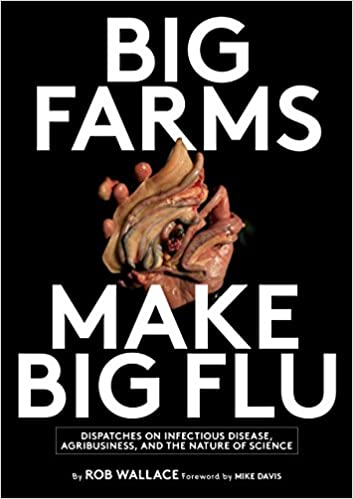Thanks to breakthroughs in production and food science, agribusiness has been able to devise new ways to grow more food and get it to more places more quickly. There is no shortage of news items on hundreds of thousands of hybrid poultry – each animal genetically identical to the next – packed together in mega-barns, grown out in a matter of months, then slaughtered, processed and shipped to the other side of the globe. Less well known are the deadly pathogens mutating in, and emerging out of, these specialised agro-environments. In fact, many of the most dangerous new diseases in humans can be traced back to such food systems, among them Campylobacter, Nipah virus, Q fever, hepatitis E, and a variety of novel influenza variants.
Agribusiness has known for decades that packing thousands of birds or livestock together results in a monoculture that results in disease. But market economics doesn’t punish the companies for growing Big Flu – it punishes animals, the environment, consumers, and contract farmers. Alongside growing profits, diseases are permitted to emerge, evolve, and spread with little check. “That is,” writes evolutionary biologist Rob Wallace, “it pays to produce a pathogen that could kill a billion people.”
Big Farms Make Big Flu

